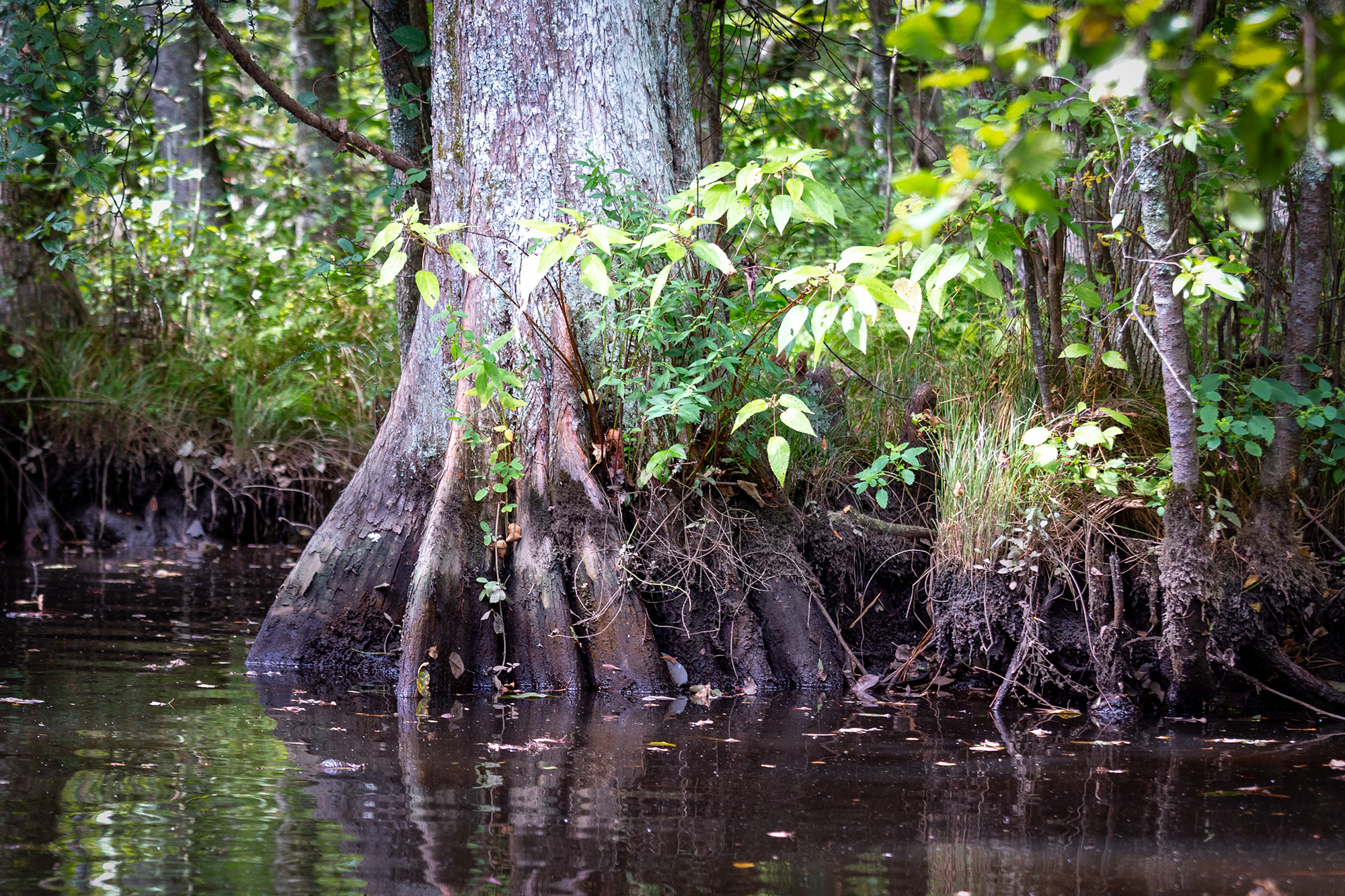Climate and environmental superstars
Swamps and wetlands are among our most valuable ecosystems. Their deep brown, oxygen-poor soils can hold thousands of years’ worth of accumulated carbon, safely stored where it doesn’t warm the planet. They alter pollutants out of surface water, keeping streams and rivers clean. They provide nurseries for young fish and homes to thousands of species.
Those species include microbes that form living films known as a “neuston layer.” While these films can resemble oil slicks, they are a natural and healthy part of the wetland.
Wetlands outperform any human technology. Yet humans have ruined many of these precious places, through deliberate destruction or, in the case of the emerald ash borer, through indifference and neglect.
Cinnamon fern, Nanticoke River wetland
Ash tree roots in carbon-rich soil along the banks of the Pocomoke River
Sneezeweed and soil, Mattawoman Creek
Soil sample collected by University of Maryland ecologists, Marshyhope Creek wetland
Sneezeweed, asters, dead ash trees, Mattawoman Creek
“Neuston layer” biofilm, Tuckahoe Creek wetland
Hummingbird whose nest’s outer layer is made from lichen, Marshyhope Creek wetland
Skink, Tuckahoe Creek wetland
Swamp darner emerging from the water, Piscataway Park
Juvenile fish in a shallow pool under an upturned hummock, Nanticoke River wetland
Sensitive fern, emerging in early spring, Tuckahoe Creek wetland










